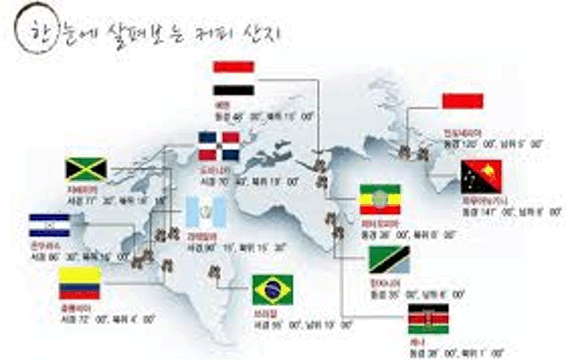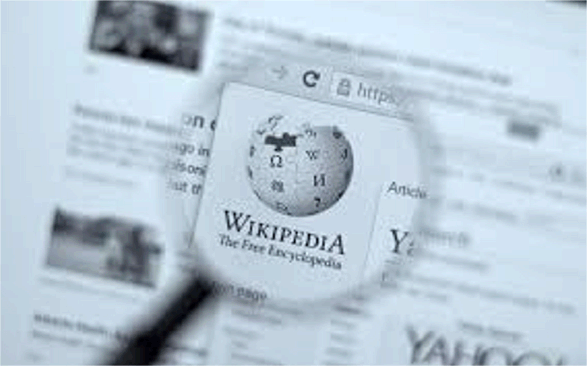호주가 북한의 러시아 미사일 발사를 비난하자 김정은은 한국을 위협하고 있다. 하지만 그의 무기는 무엇을 할 수 있습니까?
Liana Walker의 전선 포함
3시간 전3시간 전에 게시됨
군중을 배경으로 전시된 두 개의 미사일.
북한은 군사 퍼레이드에서 미사일을 자주 전시한다. (AP: 조선중앙통신)
링크 복사링크가 복사되었습니다.
북한 최고지도자 김정은은 남한이 우크라이나와의 전쟁을 위해 러시아와 미사일을 거래한 것이 분명해지면서 남한에 대한 위협을 확대하면서 새해를 시작했습니다.
그러나 전문가들은 이 미사일이 사용될 경우 얼마나 성공할 수 있는지 의문을 제기했습니다.
김씨는 한국과 미국에서 선거가 있던 해에 자신의 선동적인 수사를 확대하면서 서울을 “우리의 주요 적”이라고 표시하고 전멸시키겠다고 위협했습니다.
김 위원장은 이번 주 군수공장을 시찰하면서 이제 한국을 북한에 대해 “가장 적대적인 국가”로 정의해야 할 때라고 말했으며 북한은 핵전쟁 억지력을 강화해야 한다고 말했습니다.
김 위원장은 남조선이 감히 북한을 상대로 군사력을 사용한다면 “우리 손에 있는 모든 수단과 힘을 총동원해 (남조선)을 멸절시키는 데 주저하지 않을 것”이라고 말했다고 조선중앙통신이 전했다.
김정은 북한 국무위원장이 전략순항미사일 시험발사를 지도하고 있다.
북한 지도자 김정은이 남측을 향한 선동적인 수사를 수위를 높이고 있다.(로이터: KCNA)
같은 날 호주는 러시아가 북한으로부터 탄도 미사일을 받아 우크라이나에 사용했다고 비난하는 50개 국가에 합류했습니다.
우리는 조선민주주의인민공화국(DPRK)의 수출과 러시아의 북한 탄도미사일 조달, 그리고 러시아가 2023년 12월 30일과 2024년 1월 2일 우크라이나에 대해 이러한 미사일을 사용한 것을 가능한 한 가장 강력한 표현으로 규탄한다. 이러한 무기는 우크라이나 국민의 고통을 증가시키고 러시아의 침략 전쟁을 지원하며 글로벌 비확산 체제를 약화시킵니다. 러시아가 우크라이나에서 북한의 탄도미사일을 사용하는 것은 또한 북한에 귀중한 기술적, 군사적 통찰력을 제공합니다. 우리는 이번 협력이 유럽, 한반도, 인도 태평양 지역 및 전 세계에 미치는 안보 영향에 대해 깊이 우려하고 있습니다.
우리 정부는 북한과 러시아 간의 무기 이전을 단호하게 반대하는 데 함께 섰습니다. 탄도미사일과 기타 무기 및 관련 물자를 북한에서 러시아로 이전하는 것은 다수의 유엔 안전보장이사회 결의(UNSCR), 즉 결의 1718호(2006), 결의 1874(2009), 결의 2270( 2016) – 러시아 자체가 지원했습니다. 우리는 이러한 무기 수출의 대가로 러시아가 북한에 무엇을 제공하는지 면밀히 모니터링하고 있습니다. 우리는 북한과 러시아가 관련 UNSCR을 준수하고 이를 위반하는 모든 활동을 즉각 중단할 것을 촉구합니다.
북한은 핵탄두를 탑재해 발사할 경우 광범위한 파괴를 초래할 수 있는 대륙간탄도미사일(ICBM)을 포함한 무기를 비축하고 있다고 주장하고 있다.
그러나 시드니 대학교 정부 및 국제관계부의 저스틴 헤이스팅스 교수에 따르면, 국가로부터의 위협 수준은 김 위원장이 세계가 믿기를 원하는 만큼 높지 않을 수도 있습니다.
이는 북한이 보유하고 있다고 말하는 가장 치명적인 무기 중 일부이며, 이로 인해 발생할 수 있는 잠재적인 피해는 다음과 같습니다.
북한은 어떤 미사일을 보유하고 있나요?
북한의 미사일은 단거리, 중거리, ICBM으로 다양하며 ICBM의 경우 사거리가 15,000km에 달할 수 있으며 평양에서는 호주나 미국까지 도달할 수 있습니다.
바퀴가 달린 대형 미사일.
화성-18호는 추가 발사를 위해 다른 종류의 연료를 사용한다고 한다. (로이터 : KCNA)
화성-18형은 북한의 ICBM 중 최초로 고체 로켓 연료를 사용한 것으로, 전쟁 중 더 빠른 배치가 가능하다.
길이 25m, 지름 2m의 화성-18형은 2023년 4월 첫 비행을 했다.
대형 대륙간 탄도 미사일이 트럭에서 수직으로 발사되면서 배기가스에서 나오는 불꽃이 땅에 닿습니다.
북한 정부는 2022년 3월 24일 화성-17형을 시험발사했다고 밝혔다.(AP: 조선중앙통신/한국뉴스서비스/파일)
화성-18형과 크기가 비슷하며 길이는 24~26m, 지름은 최대 2.5m로 추정된다.
하지만 화성-17형은 기존 미사일 모델과 달리 한 번에 다수의 탄두를 발사할 수 있다고 한다.
이 미사일은 2020년에 공개되었으며 북한은 2022년 3월 24일에 처음으로 성공적으로 발사했다고 주장합니다. 그러나 분석가들은 그것이 이전 모델이고 첫 번째 성공적인 발사는 2022년 11월 18일이라고 믿고 있습니다.
김정은 북한 국무위원장이 화손을 실은 대형 트럭 옆에 서 있다.
As Australia condemns North Korea for sending Russia missiles, Kim Jong Un is threatening South Korea. But what can his weapons do?
By Liana Walker with wires
Posted 3h ago3 hours ago
abc.net.au/news/north-korea-weapons-capabilities-russia-south-korea/103306532Copy link
Link copiedShare article
North Korea’s supreme leader Kim Jong Un began the new year by escalating threats towards South Korea as it becomes evident the nation has traded missiles with Russia for its war against Ukraine.
However, experts have called into question how successful those missiles could be if used.
Mr Kim labelled Seoul “our principal enemy” and threatened it with annihilation, as he escalated his inflammatory rhetoric in an election year in South Korea and the United States.
During tours of munitions factories this week, Mr Kim said it was time to define South Korea “as a state most hostile” towards North Korea and said North Korea must bolster its nuclear war deterrent.
If South Korea dares to use its military force against North Korea, Mr Kim said: “We will have no hesitation in annihilating (South Korea) by mobilising all means and forces in our hands,” according to KCNA news agency.
On the same day, Australia joined 50 nations condemning Russia for receiving ballistic missiles from North Korea and using them against Ukraine.
The joint statement reads:
We condemn in the strongest possible terms the Democratic People’s Republic of Korea’s (DPRK) export and Russia’s procurement of DPRK ballistic missiles, as well as Russia’s use of these missiles against Ukraine on December 30, 2023, and January 2, 2024. The transfer of these weapons increases the suffering of the Ukrainian people, supports Russia’s war of aggression, and undermines the global non-proliferation regime. Russia’s use of DPRK ballistic missiles in Ukraine also provides valuable technical and military insights to the DPRK. We are deeply concerned about the security implications that this cooperation has in Europe, on the Korean Peninsula, across the Indo-Pacific region, and around the world.
Our governments stand together in resolute opposition to arms transfers between the DPRK and Russia. The transfer of ballistic missiles, along with any other arms and related materiel, from the DPRK to Russia flagrantly violates multiple United Nations Security Council resolutions (UNSCRs) – namely, resolution 1718 (2006), resolution 1874 (2009), and resolution 2270 (2016) – that Russia itself supported. We are closely monitoring what Russia provides to the DPRK in return for these weapons exports. We call on the DPRK and Russia to abide by relevant UNSCRs and to immediately cease all activities that violate them.
North Korea claims to have a stockpile of weapons including intercontinental ballistic missiles (ICBM) that if launched with nuclear warheads could cause widespread destruction.
However, according to Professor Justin Hastings from the University of Sydney’s Department of Government and International Relations, the level of threat from the nation may not be as high as Mr Kim wants the world to believe.
These are some of the deadliest weapons North Korea says it has, and the potential damage they could cause.
What missiles does North Korea have?
North Korea’s missiles vary between short range, medium and ICBM — with the latter supposedly able to reach a range of 15,000 kilometres, which from Pyongyang would cover Australia or the United States.
The largest of those missiles is the Hwasong-18.
The Hwasong-18 is the first of North Korea’s ICBMs to use solid rocket fuel, which can allow faster deployment during a war.
Measuring 25 metres long and 2 metres in diameter, the Hwasong-18 took its maiden flight in April 2023.
Preceding that is the Hwasong-17.
Similar in size to the Hwasong-18, it is estimated to be between 24 to 26m long and up to 2.5m in diameter.
However, unlike earlier missile models, the Hwasong-17 is said to be able to launch multiple warheads at once.
The missile was unveiled in 2020 and North Korea claims it was first successfully launched on March 24, 2022, however, analysts believe that was an earlier model, and the first successful launch was November 18, 2022.
That prior model in question was the Hwasong-15.
The estimated 22.5m-long missile took its maiden flight on November 28, 2017.
The missile is said to be able to travel 13,000km — far enough to reach Washington DC.
When the Hwasong-15 was first launched, it was initially believed to be the prior model, the Hwasong-14.
The Hwasong-14, measuring 19.5 metres long and with a diameter of 1.7m, was first launched on July 4, 2017, to coincide with the United States’ Independence day.
The Hwasong-14 is believed to be have a range of 10,000km — about double its predecessor, the Hwasong-12.
The Hwasong-14 is believed to be the second stage of the Hwasong-12, which was also launched in 2017.
The Hwasong-12, measuring 16.5 metres long with a 1.5 metre diameter, is understood to have a range between 3,700 and 6,000km, able to reach the northern parts of the Northern Territory in Australia.
In terms of North Korea’s entire missile arsenal, there is no record of just how many they have stored, but Professor Hastings says they’re unlikely to have many ICBMs.
“There’s a lot of indigenous capacity at this point so a lot of what they do is probably in-house, so we don’t know exactly how many they’re building,” he said.
“I would say with the ICBMs, they’re probably not producing hundreds of these, they’re really expensive.
“But in terms of the short range missiles, in theory they could be producing a lot and we wouldn’t really know.”
Has North Korea increased testing?
Following the death of Kim Jong Il in 2011, when Kim Jong Un took power, the number of weapons being tested significantly increased.
There was a clear spike in testing in 2022.
Professor Hastings explains the simple reason for the increase:
“It’s because they want to see if they actually work and they want to get better at having their weapons work,” he said.
“Is it provocative? Yes. Is that the main purpose of the test? Not really.”
He said the reason why North Korea wants better weapons is because their conventional forces have fallen significantly behind that of South Korea and the United States.
Whether the testing has actually improved the weapons remains unknown.
“They need reliability, they need to know (the missiles) will actually work and actually hit the target when it goes,” he said.
“That part they’re not quite there with the long range missiles.
“But certainly the whole point of testing all these short range missiles consistently is to improve understanding on how to make short range missiles in large quantities that reliably hit the targets.”
He said those targets were most likely to be South Korea or Japan.
What about its nuclear capabilities?
There are six instances on record of North Korea testing nuclear weapons.
The most recent was in 2017 where a hydrogen bomb designed to be mounted on an ICBM was successfully tested.
At the time, a tremor created from a man-made earthquake was detected at North Korea’s nuclear testing site measuring a 6.3 magnitude, according to the US Geological Survey
After the test, South Korea said it appeared to be several times stronger than its previous test, estimating the nuclear blast yield was between 50 to 60 kilotons — or five to six times stronger than North Korea’s fifth test in 2016.
However, the United States intelligence community later gave a more generous estimate of 140 kilotons.
The Norwegian Seismic Array gives the highest estimate of 250 kilotons.
Based off the highest estimate, damage from a nuclear explosion could reach as far as 8.8km from the hypocentre of the blast, with the fireball radius reaching 1.17km.
Professor Hastings said nuclear testing stopped after 2017 because North Korea believed it had completed its testing program.
In 2018, North Korea claimed to have dismantled its nuclear testing facility, and even invited foreign journalists to see. However, they did not invite international nuclear weapons inspectors to the ceremony, so the claims remain unverified.
“As long as they’re reprocessing spent fuel, as long as they’re enriching uranium, they can build new nuclear weapons without don’t any kind of testing,” Professor Hastings said.
“Especially if they have a design that they’re confident works because they did test it in the past.”
North Korea also conducted nuclear testing in 2006, 2009, 2013 and twice in 2016.
According to the Arms Control Association, as of January 2023, North Korea was estimated to have 30 nuclear warheads, and capacity to make between 50 and 70s nuclear weapons.
Why is North Korea trading with Russia?
Similar to North Korea, it is common for Russia to parade its weapons, particularly on Moscow’s annual Victory Day parade.
However, 2023 was notably scaled down compared to previous years, with just one tank on display.
It leads to the question as to what happened to Russia’s weapons — which Professor Hastings describes as an opportunity for North Korea, which has strongly supported Russia’s invasion of Ukraine.
He said it’s also a way for North Korea to make money.
“You read conflicting reports about how effective these weapons actually are … but the sheer quantity of them, if North Korea is exporting them, could allow Russia some breathing room to extend the war,” he said.
He said the allegiance with Russia also takes away some of the leverage China has over North Korea as previously its only ally.
In trade, based off Mr Kim’s meeting with Russian president Vladimir Putin in 2023, Russia is likely sharing information about space technology.
Should Australia be concerned?
Realistically, North Korea does not pose a major threat to Australia, Professor Hastings said.
This is largely because it is unlikely to waste its weapons on Australia when there is limited benefit.
“Does North Korea have missiles that can theoretically reach Australia? Yes. Could they reach Australia in a reliable way? That’s less clear,” he said.
“And would North Korea use one of its limited number of nuclear weapons on Australia? That’s even less clear.”
He said this is largely due to the fact that if North Korea were to launch a missile with a weapon on it, that would be its only shot at doing so.
“You need to make sure that you’re launching a target that will actually serve in terms of being a deterrent or being sort of what you want to actually hit.
“So, from Australia’s perspective, I think it’s significantly less likely.”
How reliable is information from North Korea?
Professor Hastings said North Korea had been mostly forthcoming with its launch failures — including the nation’s recent failed attempts at launching a spy satellite.
Solid fuel missiles add deadly edge to North Korean arsenal
But he said it was the successes that need to be questioned.
“So we can say yes, we can trust when they say, they successfully put a satellite to space, they tried it three times. They were pretty forthright the first two failed but third seems to have succeeded,” he said.
“What we don’t know is whether their capability is actually what they claim it is.”
ABC/Wires
Posted 3h ago










